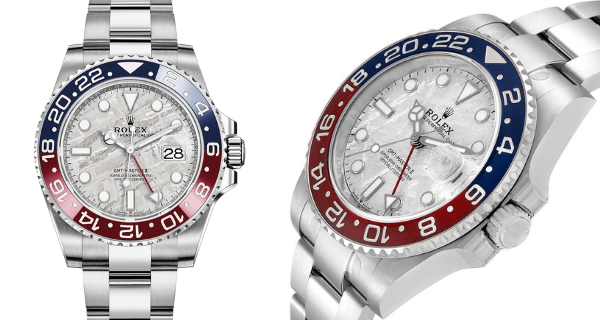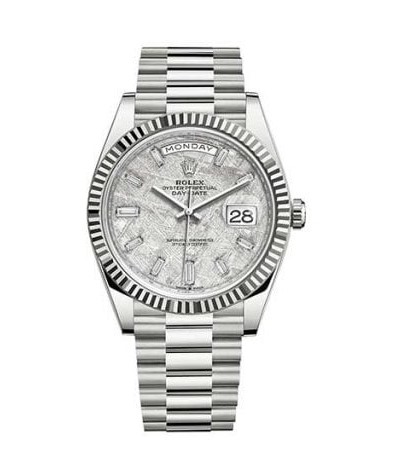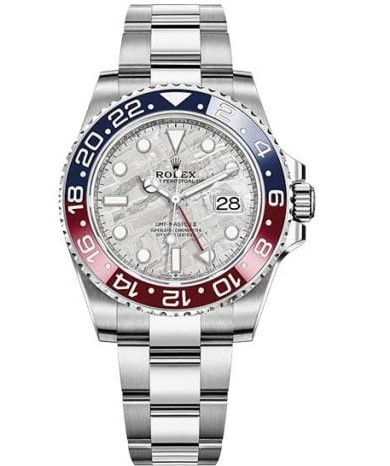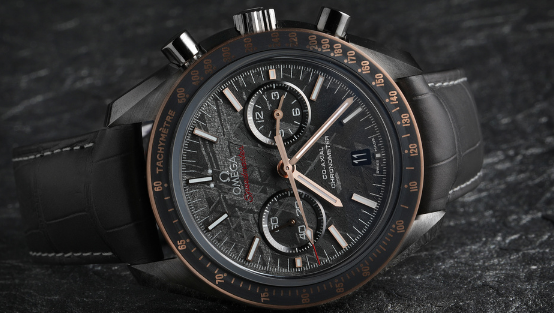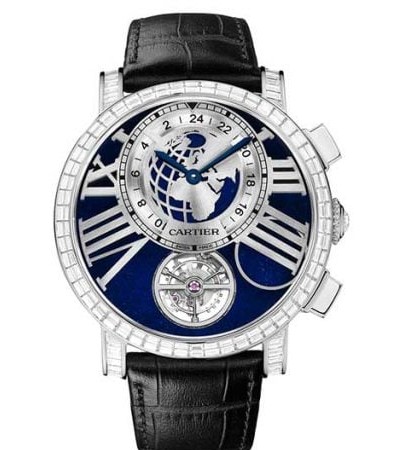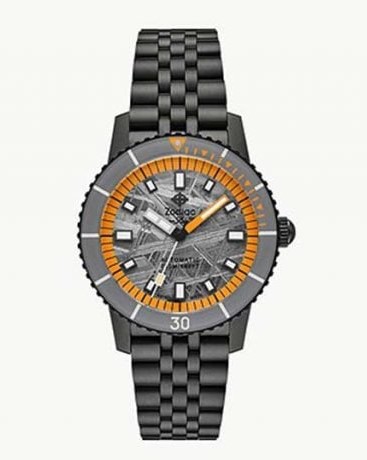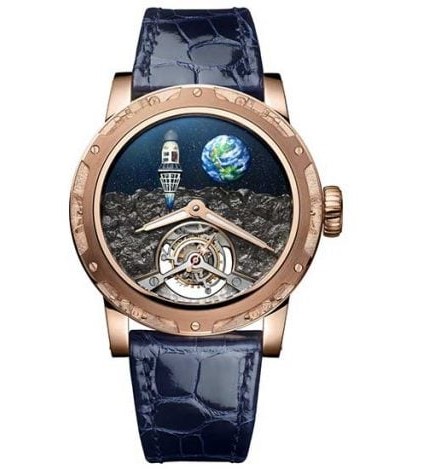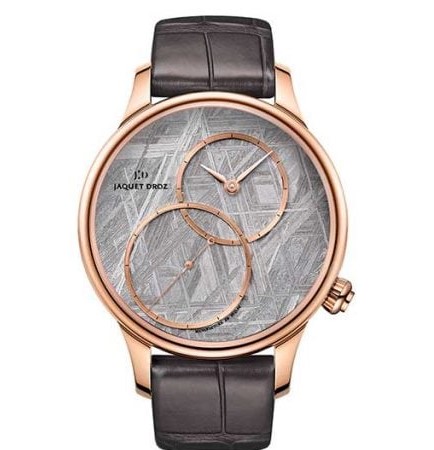What’s one way to make a luxury watch even more luxurious?
Well, if the watch is rare and there are only a few in circulation, that makes it more sought-after.
If it’s famous because of who wore it (maybe an astronaut in space or by James Bond), that can drive up value. What if it’s rare simply because it’s made of rare materials?
Part of what makes a meteorite dial so expensive is its uniqueness — no two look alike.
That’s the thinking behind meteorite dials.
The Gibeon Meteorite was first reported in 1838 but is actually reportedly millions of years old.
Scientists think the rock fell from outer space in prehistoric times and landed in the Namibian desert near the town of Gibeon. Rolex, as the industry’s leader, is always trying to make the next best watch.
Rolex was the first company to use slices of the meteorite in its dials, pairing them with 18k gold or 950 platinum to make one-of-a-kind watches. Rolex attached the slices to the dial surface and treated them with an acid-wash finish to create a crystalline pattern.
This process creates a unique pattern, ensuring that no two Rolex meteorite dials look alike.
Rolex used the meteorite dials on its Daytona and Day-Date models, already two of the most classic in its collection.
The meteorite dials can also be found on Datejust, Pearlmaster and GMT-Master II models.
So what does that uniqueness cost the consumer? Some can fetch as much as $30,000 on the market.
That may seem like a steep price, but the uniqueness and rarity — as well as being able to say you have a space rock on your wrist — is worth the cost for some.
Outside of Rolex, other companies have used meteorites in their dials.
Roles Datejust
Rolex GMT
Omega Speedmaster Grey Side of the Moon
Cartier Earth and Moon
Cartier Rotunde de Earth
Zodiac Super Sea Wolfe
Louis Monet Man on the Moon
Jaquet Droz Grande Seconds

CHARLEY PHOTO OF THE WEEK: Charley had a rough week with all those dang fireworks, but now she’s back on the grind with a daily routine of walks, naps, little snacks and generally looking cute.
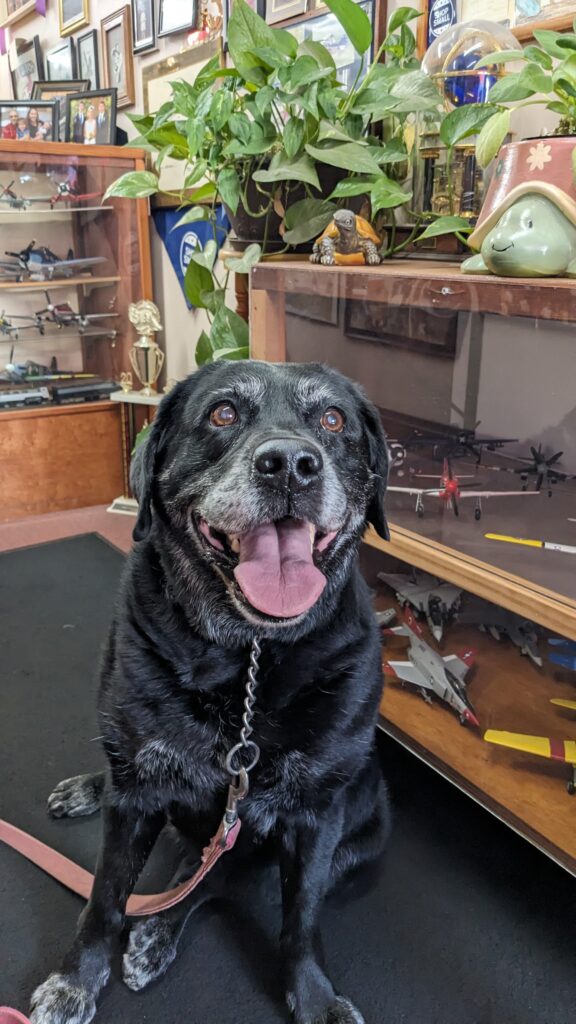
Some recent posts
- Rolex vs Omega – Crown and Case Tube
 In this weeks post, I will compare the crown and case tube between a standard Rolex and an Omega Seamaster. This is one of the biggest differences between the two watches and why I like the Rolex so much better than the Omega. Rolex Case Tube The Rolex case tube is a simple threaded stainless steel part with an internal gasket installed. It is the essence of simplicity, you unscrew.. Read More
In this weeks post, I will compare the crown and case tube between a standard Rolex and an Omega Seamaster. This is one of the biggest differences between the two watches and why I like the Rolex so much better than the Omega. Rolex Case Tube The Rolex case tube is a simple threaded stainless steel part with an internal gasket installed. It is the essence of simplicity, you unscrew.. Read More - Rolex vs Omega – Train Wheels and Mainspring Comparison
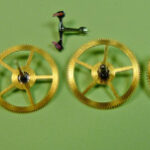 In this weeks post, we will examine the differences between the train wheels and mainspring in a Rolex 3135 and an Omega Co-Axial movement. There are quite a few differences in this part of the comparison. Rolex Train Wheels First the train wheels. On the Rolex, you will notice that the 4 train wheels are rather large and quite sturdy. The teeth are of normal size, not too big.. Read More
In this weeks post, we will examine the differences between the train wheels and mainspring in a Rolex 3135 and an Omega Co-Axial movement. There are quite a few differences in this part of the comparison. Rolex Train Wheels First the train wheels. On the Rolex, you will notice that the 4 train wheels are rather large and quite sturdy. The teeth are of normal size, not too big.. Read More - Rolex vs Omega – Escapement Comparison
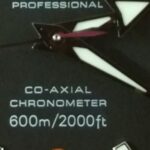 This weeks Post will compare the Escapement between the Rolex 3135 and Omega’s Co-Axial movement. This is really the heart of the movement and the fundamental difference between the two watches. Standard Lever Escapement Standard escape wheel, pallet and balance wheel Considering the escapement as a unit, it can be seen that the escape wheel supplies the power, whereas the pallet transfers the rotary motion of the escape wheel into.. Read More
This weeks Post will compare the Escapement between the Rolex 3135 and Omega’s Co-Axial movement. This is really the heart of the movement and the fundamental difference between the two watches. Standard Lever Escapement Standard escape wheel, pallet and balance wheel Considering the escapement as a unit, it can be seen that the escape wheel supplies the power, whereas the pallet transfers the rotary motion of the escape wheel into.. Read More - Rolex vs Omega : Which is the Better Watch?
 In today’s day and age, everything is up for debate. Are you Team iPhone or Team Android? Is LeBron James better than Michael Jordan? Do you prefer the Beatles or the Rolling Stones? In the watch world, the question is Rolex against Omega. So which one is better? Each watch has its own hits and misses, but the differences will be pointed out since they are the two watches serviced.. Read More
In today’s day and age, everything is up for debate. Are you Team iPhone or Team Android? Is LeBron James better than Michael Jordan? Do you prefer the Beatles or the Rolling Stones? In the watch world, the question is Rolex against Omega. So which one is better? Each watch has its own hits and misses, but the differences will be pointed out since they are the two watches serviced.. Read More - What is a California Dial?
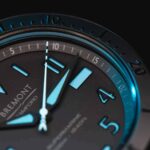 The California dial is the nickname given to watches that have Roman numerals on the upper half of the watch and Arabic on the lower half, typically with lines at the 3, 6, and 9 o’clock spots and a triangle at the 12. It was actually created by Rolex in 1942, the dial was originally known as the “error-proof” dial, designed to be more easily read because the different style.. Read More
The California dial is the nickname given to watches that have Roman numerals on the upper half of the watch and Arabic on the lower half, typically with lines at the 3, 6, and 9 o’clock spots and a triangle at the 12. It was actually created by Rolex in 1942, the dial was originally known as the “error-proof” dial, designed to be more easily read because the different style.. Read More

